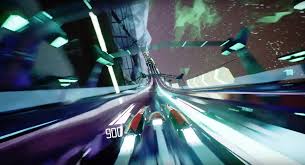With the recent release of the much anticipated Crash Bandicoot N. Sane Trilogy came a recent thought on a not so recent phenomenon. Lately, it’s been popular to release games prior to completion. In other words, most games today are unfinished; and that’s okay. This article will be brief, but in it I’ll note the historical shift to unfinished games. After that, I’ll speculate a cause for this historical shift.
Advantage: Contemporary Video Games
Far as I can tell, contemporary video games have a distinct advantage over retro games. One example will suffice to illustrate what I mean. Consider Sonic Boom. In Sonic Boom, Knuckles possessed an unusual power. He could jump infinitely. Given Knuckles’ miraculous ability, some players claim to have finished the game in under three hours. However, the developers caught on to the exploit and patched it, barring the ability from players.

Nowadays, developers can patch their games after their release. This hasn’t always been the case. From the Atari 2600 to around the PS2, when companies released games, they couldn’t go back into the game and patch it up. The game was what it was-nothing more, nothing less. If the company wished to patch their game, they would probably have waited for the sequel. It wasn’t until around the Xbox 360/PS3/Nintendo Wii era, when developers had more direct access to the consoles and games themselves.*
Implication of Unfinished Games
So, what of it? What to make of this shift to more direct patching? One interesting consequence of direct patching, as I mentioned above, is the rise of unfinished games. By ‘unfinished’ I don’t mean poorly coded, glitch-ridden, or any like terms. Instead, I mean something like ‘open to direct developer influence’. Should a game require patching, developers can go back into their game, patch it up, then publicly release an update for it.
But this, I think, means games are never really finished. They’re simply works in progress. And progress halts when developers stop releasing updates. It’s like fixing a parade float while the parade’s in progress. But, like a repairmen making adjustments mid-parade, developers making adjustments to games after their release seems obsessive.

And therein lies the rub: obsession. It’s probable that contemporary game developers obsess over perfection. And understandably so. The story of video game development is one of curiosity. Developers have always sought to improve upon their technology. “What would happen if we did x, y, and z?” If one’s vision became too large for a console, they pushed the console to its limits or developed a new one. Ambition and competition pervades the studios of every major game development company. And this ambition and competition, I suggest, is symptomatic of a desire to do the impossible: become perfect.
Therefore, unfinished games are imperfect games. They could be better. Their glitches and errors to developers are like a leper’s blemishes; they wreak of an older time, when they didn’t know better. That kind of chronological snobbery might explain the rise in unfinished games.
Conclusion: The Weakest Survive
Wrapping up, I set out to accomplish two tasks. First, I observed the contemporary historical shift from classic game development to now, highlighting developers’ use of patches. Second, I suggests an explanation for this shift; namely, progressivism, or obsession with perfection. Earlier I said contemporary video games have a distinct advantage over retro games. Retro gaming, too, has a distinct advantage over contemporary video games; namely, being finished.
* = Barring MMORPGs like World of Warcraft.





